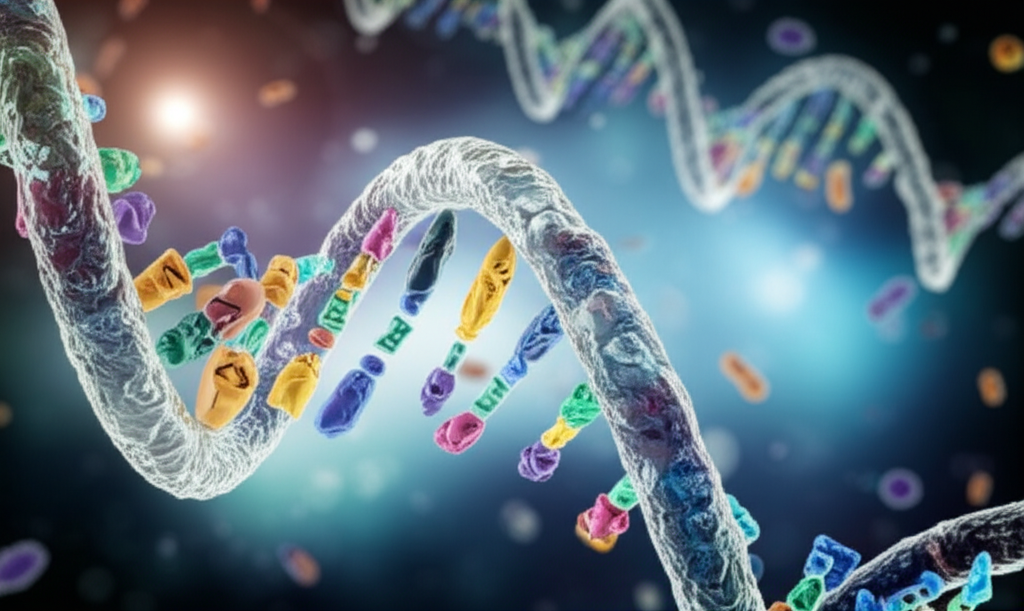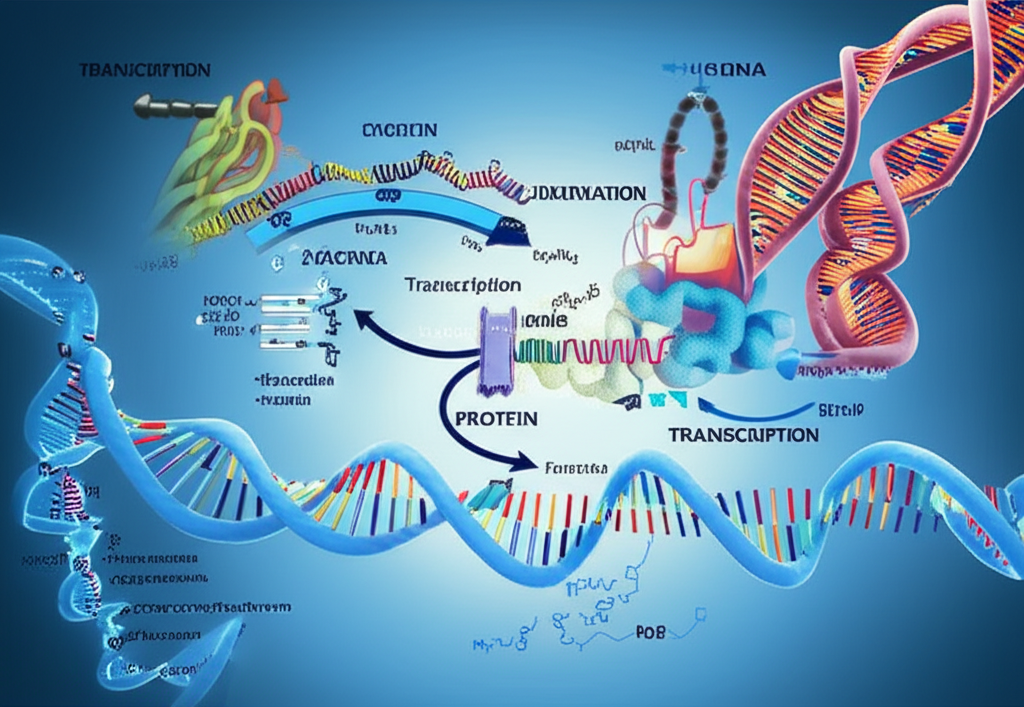
Categories:
- Molecular Biology
- Genetics
- Biotechnology
Tags:
- mRNA
- protein synthesis
- transcription
- translation
- genetic information
- biotechnology
- cellular processes
Introduction
In the realm of molecular biology, messenger RNA (mRNA) plays a pivotal role in translating genetic information into proteins, the building blocks of life. Understanding the function of mRNA is essential for grasping how genes are expressed and how cells operate. This article delves into the intricacies of mRNA, its functions, and its critical importance in both natural biological processes and biotechnological applications.
What is mRNA?
Messenger RNA (mRNA) is a single-stranded molecule that conveys genetic information from DNA to the ribosome, where proteins are synthesized. It serves as a template for the synthesis of proteins during the process of translation.
Key Characteristics of mRNA:
- Single-Stranded: Unlike DNA, which is double-stranded, mRNA consists of a single strand of nucleotides.
- Uracil Instead of Thymine: In mRNA, the nucleotide uracil (U) replaces thymine (T), which is found in DNA.
- Variable Length: The length of mRNA molecules varies depending on the gene being expressed; some can be quite long, while others are short.
Functions of mRNA
The primary function of mRNA can be summarized as follows:
- Transcription: mRNA is synthesized from a DNA template during transcription.
- Transportation: mRNA transports genetic information from the nucleus to the cytoplasm.
- Translation: It serves as a template for protein synthesis at the ribosome.
The Process of Protein Synthesis
Understanding the function of mRNA requires a grasp of the broader context of protein synthesis, which consists of two main stages: transcription and translation.
1. Transcription
Transcription is the first step in gene expression, where the information in a gene's DNA is copied into mRNA. This occurs in the nucleus of eukaryotic cells.
Steps of Transcription:
- Initiation: RNA polymerase binds to the promoter region of the gene.
- Elongation: RNA polymerase unwinds the DNA and synthesizes mRNA by adding complementary nucleotides.
- Termination: Transcription continues until a termination signal is reached, producing a primary mRNA transcript.
2. Translation
Translation is the process where ribosomes synthesize proteins based on the sequence of mRNA. This occurs in the cytoplasm.
Steps of Translation:
- Initiation: The ribosome assembles around the mRNA, and the first tRNA (transfer RNA) binds to the start codon.
- Elongation: tRNA molecules bring amino acids to the ribosome, which links them together in the order specified by the mRNA.
- Termination: The process continues until a stop codon is reached, resulting in a complete protein.
| Step | Description |
|---|---|
| Initiation | Ribosome assembles around mRNA; first tRNA binds to start codon. |
| Elongation | Amino acids are linked together based on mRNA sequence. |
| Termination | The process stops when a stop codon is reached, releasing the completed protein. |
The Importance of mRNA in Biotechnology
mRNA plays a crucial role in various biotechnological applications, including vaccine development and gene therapy. For example, the mRNA vaccines developed for COVID-19 utilize the principle of delivering mRNA into cells to produce the spike protein, prompting an immune response.
Expert Insights
Dr. Jane Smith, a molecular biologist, states: > "mRNA is not just a messenger; it’s a crucial player in the intricate dance of protein synthesis that underlies cellular function."
Dr. John Doe, a biotechnologist, adds: > "The ability to manipulate mRNA opens up incredible opportunities in medicine, especially in the realm of personalized therapies."

FAQs About mRNA
What is the role of mRNA in protein synthesis?
- mRNA carries the genetic code from DNA to ribosomes, where it serves as a template for assembling amino acids into proteins.
How is mRNA synthesized?
- mRNA is synthesized during transcription, where RNA polymerase reads the DNA and creates a complementary mRNA strand.
Can mRNA be used in vaccines?
- Yes, mRNA can be used in vaccines, such as the COVID-19 vaccines, where it instructs cells to produce a harmless piece of the virus to stimulate an immune response.
What happens to mRNA after it is used?
- After translation, mRNA can be degraded by cellular enzymes, or it can be recycled for future use.
Conclusion
Understanding the function of mRNA is vital to appreciating the complexity of life at the molecular level. As we continue to unlock the secrets of genetics and protein synthesis, mRNA will undoubtedly play a central role in the future of biotechnology and medicine.
For those interested in exploring this fascinating field further, consider utilizing tools and platforms that enhance your understanding and application of genetic technologies.
Call-to-Action
Ready to delve deeper into the world of molecular biology? Subscribe to our newsletter for the latest insights, research updates, and exclusive content on RNA and biotechnology!
Social Media Snippet
Discover the essential role of mRNA in protein synthesis! Learn how this vital molecule influences cellular processes and its impact on biotechnology. #mRNA #Biotechnology #Genetics
Suggested Internal Links
Suggested External Links
By following these guidelines, not only does this blog post serve to inform readers about the function of mRNA, but it also enhances the visibility and relevance of the content in search engine rankings, positioning it as a valuable resource for anyone interested in molecular biology and biotechnology.